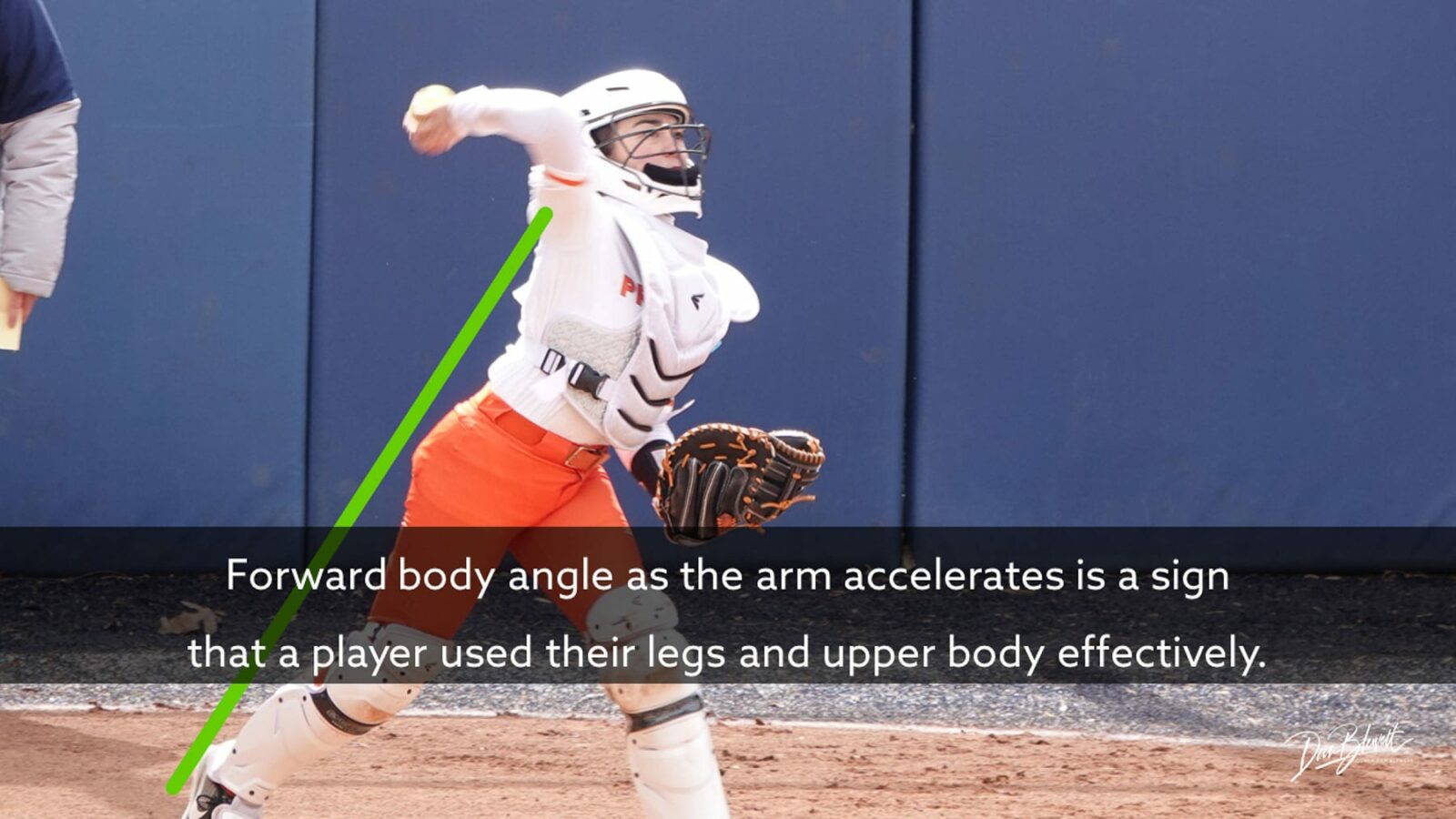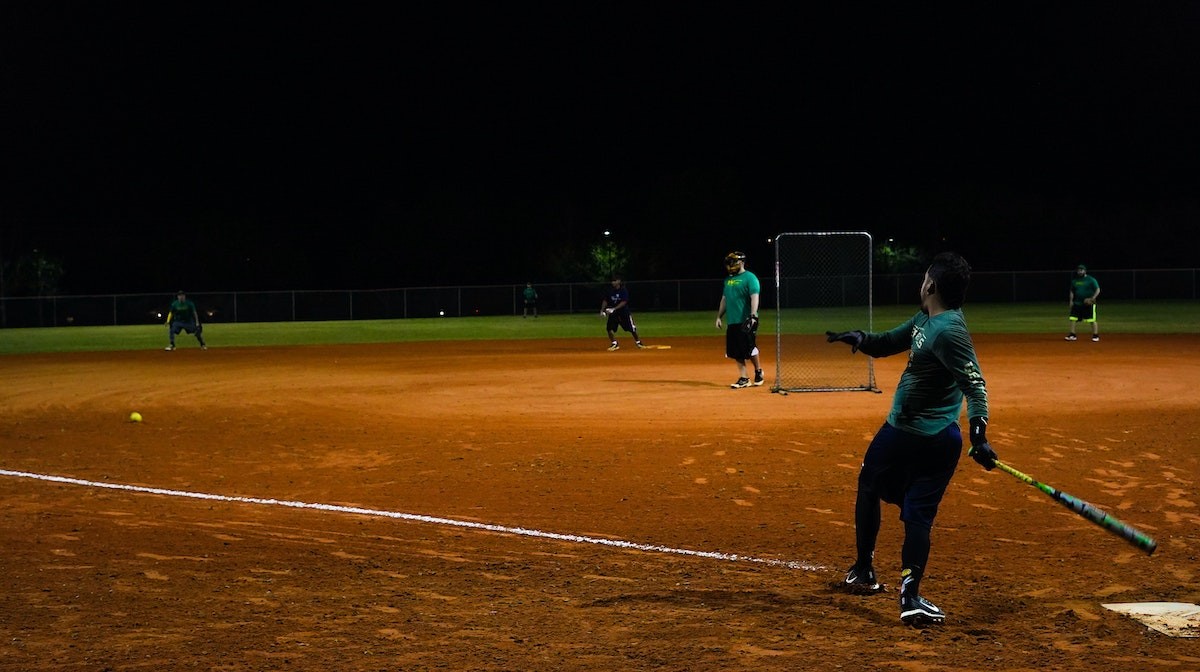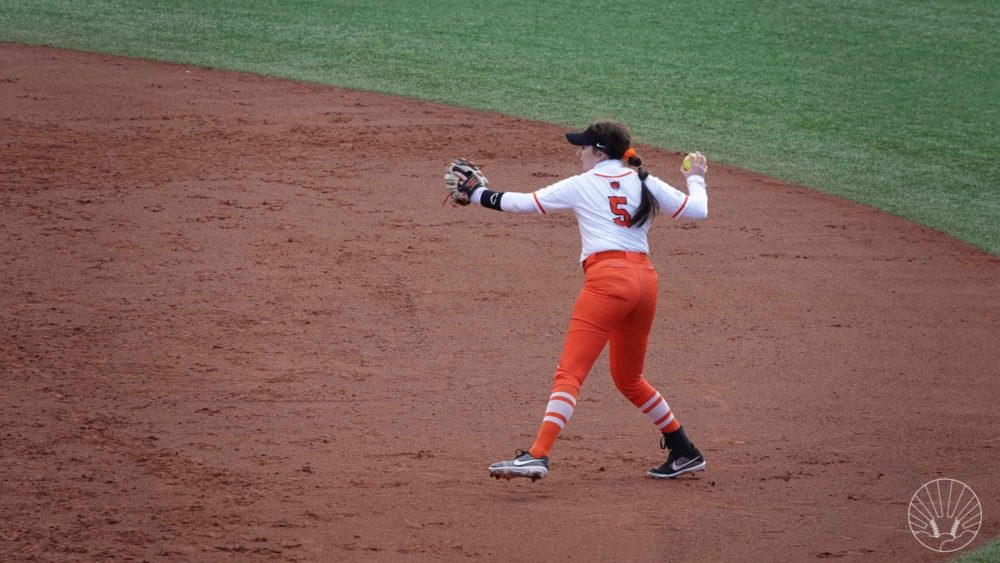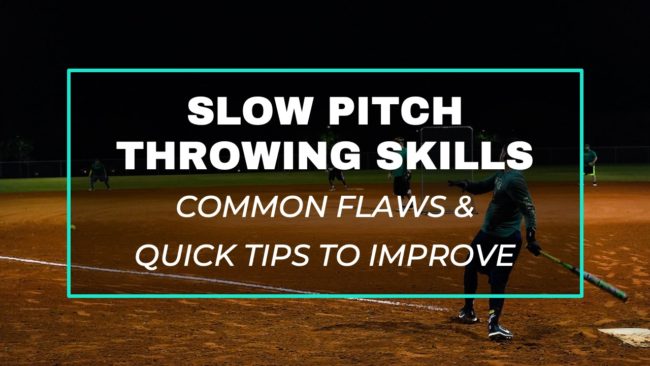*This article may contain product links which pay me a small commission if you make a purchase. Learn more.
Slow pitch softball is a hugely popular sport, inviting players from all walks of live to get out on the diamond. But, for those without a significant baseball or softball background, proper, strong throwing mechanics don’t necessarily come easy.
It can be downright embarrassing to make soft, grenade-like throws across the diamond. For those who are well-respected in their day jobs, who wants to go out and be a weak link or stick out because of a lack of skill? Slow pitch softball throwing is a critical skill to work at.
In today’s article, we’ll cover proper throwing mechanics for slow pitch players and give you quick tips to make meaningful changes in throwing speed and accuracy. If you’re looking for something really detailed, read my in-depth article on proper throwing mechanics.
Use the table of contents below to jump ahead to any section in this article.
Slow Pitch Throwing Skills – Quick FAQ
How Can I Quickly Improve My Throwing in Softball?
The fastest way for adult softball players to make big improvements in slow pitch softball throwing mechanics is by improving footwork, shoulder blade and glove side actions, and improve rotation of the hips for those without a foundation growing up playing baseball or softball.
What Are Good Throwing Drills for Slow Pitch Players?
The best handful of throwing drills for slow pitch players are the rocker drill, lawnmower drill and fast shuffles (all are shown in this article). These drills teach how the glove side works, how the shoulder blades work, and helps to unify the body to work as a system, which is something that players who are older and don’t have strong baseball or softball backgrounds, tend to struggle with.
What Prevents Many Adult Softball Players from Throwing Well?
One is the boney changes that occur while throwing a ball consistently during childhood. Humeral retroversion is something that occurs in children, where their upper arm rotates permanently to allow increased range of motion when throwing a ball. This adaptation is necessary to throw a ball hard, so adults who didn’t play ball as children will not be able to regain the range of motion of their peers who did play in their youth. Additionally,
We’ll start with common problems, then work our way to solutions and drills at the end that are appropriate for slowpitch players.

Common Reasons Slow Pitch Softball Players Don’t Throw Very Well
There are myriad reasons that players lag behind in their softball skills, but here are a few common ones that hold many recreational players back.
Reason 1: Your Throwing Shoulder Missed a Critical Developmental Window as a Kid
Throwing an object at high speeds requires a number of boney and soft-tissue adaptations that can only be developed while young.
One of these adaptations is called humeral retroversion, which is when the upper arm bone in the throwing shoulder permanently rotates to allow greater range of motion. All high-level softball and baseball players have this permanent change in their shoulder.
Basically, you MUST have humeral retroversion to ever become a very hard thrower–otherwise the arm doesn’t “lay back” as seen below, which is a major way throwers get their power.

If You Didn’t Play Ball as a Kid, You’ll Have to Work a Lot Harder as an Adult.
We can do our best now to create better habits, but we can’t undo missing this critical window – adults who take up throwing for the first time will never have this boney adaptation that players who threw a lot as kids.
This isn’t to discourage you, but rather to be honest about what hurdles you’ll face in trying to improve your throwing as an adult slow pitch softball player.
Mike Reinold, former head Athletic Trainer for the Boston Red Sox and an expert on arm injuries, has this to say about humeral retroversion:
Essentially, the upper arm in baseball players has boney adaptations that occur while throwing as a youth with open growth plates. This allows for external rotation (layback) while throwing, and is also responsible for the shift in total rotational range of motion and subsequent loss of internal rotation. This boney adaptation is a requirement for throwing later in life, showing the importance of needing to throw as a youth as young fourth grade.
– Mike Reinold, former PT for the Boston Red Sox
Takeaway: You may be fighting a lack of humeral retroversion and so we’ll have to adopt different strategies to improve your throwing.
Reason 2: Your Body Isn’t Hasn’t Been Trained to Rotate
When’s the last time you rotated at the hips explosively?

Unless you’re an avid golfer or tennis player, probably not very often.
For those without a background in rotational sports like baseball, softball, golf, discus throwing or tennis (to name a few), your body may not be very good at producing the rotational force necessary to be a naturally great thrower.
Like anything else, you get good at things you consistently do. The throwing motion is a sequence of muscles firing and body parts moving. If the sequence isn’t timed up properly, the output–the throw–isn’t very good.
Takeaway: Getting the body to rotate well and with good force is an important thing for slow pitch players to train.
Reason 3: Your Footwork is Lacking in Both Technique & Speed

Footwork is a HUGE part of throwing a softball properly. Slow pitch players–who are weekend warriors–probably don’t spend much, if any, time practicing fundamentals. Slow pitch softball games are meant to be a fun recreational activity and not suck time away from the rest of your life.
Practicing fundamentals? A big time-suck. BUT…with just a few minutes of practice a week, a little fundamental instruction can go a long way.
How to Improve Your Throwing – Quick Tips
Nothing comes without hard work and dedication. But, novices can make some pretty fast progress if they devote a bit of time to the right things.
Drill #1: The Square Hips Drill
This drill helps loosen up the hips and give slowpitch softball players a feel for shoulder-hip separation, which is another important concept to understand in the throwing motion.
This one is easy to do incorrectly, so focus really hard on the teaching points in the video about shoulder blade positioning, hand break and more.
Drill #2: Fix Your Infield Footwork
Infield footwork sets the stage for good throwing mechanics in slowpitch softball. This is the FIRST thing to clean up. Again, fundamentals are boring but they make all the difference.
If you want to see what it looks like in slow-motion, be sure to watch this video on footwork as well.
Drill #3: The Pallof Rotation Exercise
Since it’s impractical for many people to throw medicine balls indoors (which is the best solution for developing rotational strength), this exercise is a good substitute for slow pitch softball players. You can add this pallof press variation to your workouts in any commercial gym, and a home gym as well by swapping bands for the cable machine.
Integrating more exercises into your gym routine that will help you with your slow pitch skills is important – don’t neglect rotating, as it’s critical for batting power as well as your throwing speed.

More Slow Pitch Softball Throwing Resources
I’m based in the Washington, DC area (known lovingly as the DMV – DC, Maryland, Virginia). Reach out if you’re local and need help with your throwing. I do softball lessons in DC with select clients, and I do softball camps in the DMV area selectively throughout the year.
For more slow pitch softball throwing help, be sure to check out:
- My Softball YouTube Channel
- Slowpitchskills.com – my Slowpitch website
- My Softball-Specific Strength Training Program
- Or Contact Me via email
Thanks for reading! – Coach Dan Blewett

